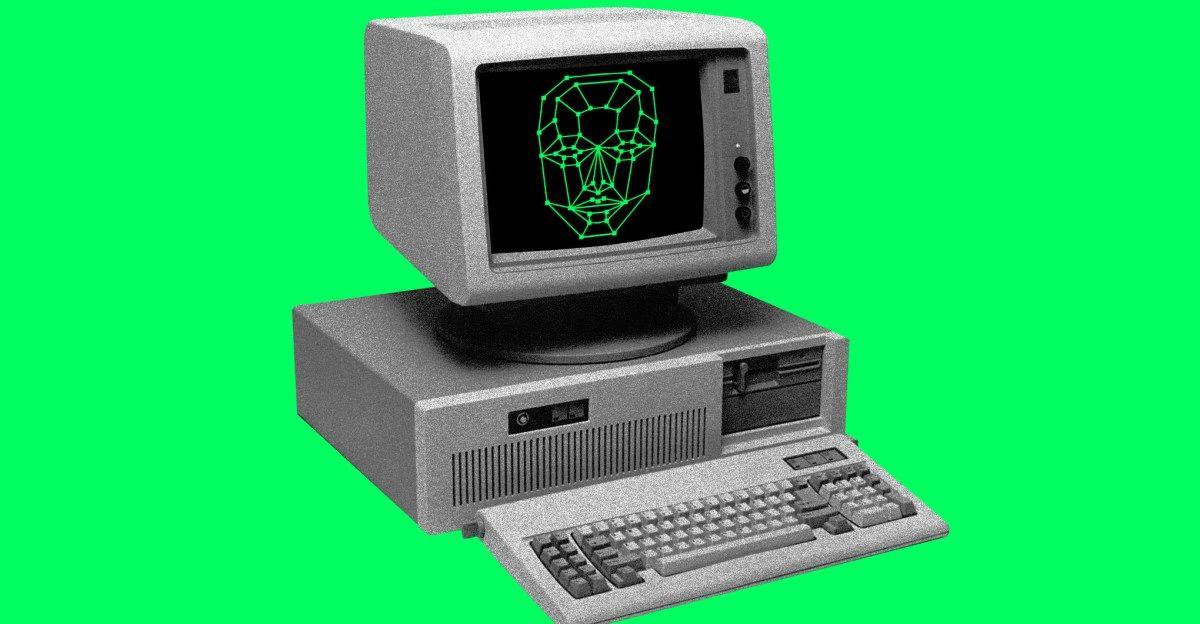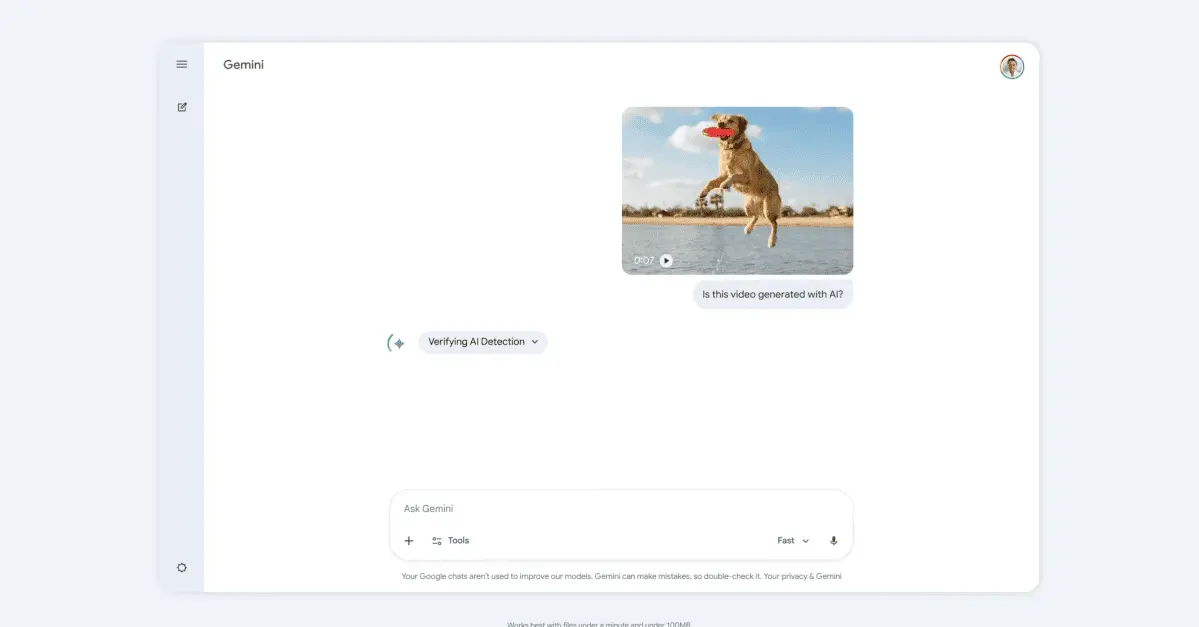IBM Unveils Granite 3.2: Advanced AI with Conditional Reasoning and Document Vision
4 Sources
4 Sources
[1]
IBM Granite 3.2 adds Enhanced Reasoning to its AI mix
In its latest addition to its Granite family of large language models (LLMs), IBM has unveiled Granite 3.2. This new release focuses on delivering small, efficient, practical artificial intelligence (AI) solutions for businesses. IBM has continued to update its Granite LLMs line at a rapid rate. Its last release, Granite 3.1, appeared at the end of 2024. That version was essentially an update. This new model, however, adds experimental chain-of-thought (CoT) reasoning capabilities to its bag of tricks. Also: Most US workers don't use AI at work yet. This study suggests a reason why CoT reasoning is an advanced AI technique that enables LLMs to break down complex problems into logical steps. This process is meant to imitate human-like reasoning processes. In theory, this approach significantly enhances an LLM's ability to handle tasks requiring multi-step reasoning, calculation, and decision-making. In particular, IBM CoT uses a Thought Preference Optimization framework that enhances reasoning across a broad spectrum of instruction-following tasks. Unlike traditional reinforcement learning approaches focused mainly on logic-driven tasks, TPO allows for improved reasoning performance without sacrificing general task effectiveness. This approach helps mitigate common performance trade-offs seen in other models that specialize in reasoning. So, what does this advance mean for you and me? IBM explained that if you think about giving an AI chatbot a prompt, a process called "prompt chaining", you get a specific answer. For example, with prompt chaining the question "What color is the sky?", you should get the answer "Blue." "However, if asked to explain 'Why is the sky blue?' using CoT prompting, the AI would first define what 'blue' means (a primary color), then deduce that the sky appears blue due to the absorption of other colors by the atmosphere. This response demonstrates the AI's ability to construct a logical argument," or the appearance that the LLM is reasoning its way to an answer. Also: 15 ways AI has saved me time at work - and how I plan to use it now CoT is available in the Granite 8B and 2B versions. Developers can toggle reasoning on or off programmatically. This option enables businesses to optimize computational resources based on task complexity. After all, sometimes you want to know what the sky is like without any scientific details. This approach, IBM claims, enables the 8B model to rival the performance of much larger models, such as Claude 3.5 Sonnet and GPT-4o on complex mathematical reasoning tasks. IBM has also introduced a new two-billion-parameter Vision Language Model (VLM), specifically designed for document-understanding tasks. This development is not, as you might first think, a graphics function. Instead, the VLM is meant to improve Granite's document-understanding abilities. IBM used its open-source Docling toolkit to process 85 million PDFs and generated 26 million synthetic question-answer pairs to enhance the VLM's ability to handle complex document-heavy workflows While other AI companies appear to swerve safety issues, IBM still considers safety a top-of-mind function. Granite Guardian 3.2, the latest in IBM's suite of AI safety models, offers enhanced risk detection in prompts and responses. This updated version maintains performance while reducing model size by 30%, introducing a new "verbalized confidence" feature for more nuanced risk assessment. Also: OpenAI finally unveils GPT-4.5. Here's what it can do Businesses may also be interested in Granite's advanced forecasting capabilities. The new TinyTimeMixers (TTM) models with sub-10M parameters can run long-term forecasting up to two years into the future. These models are useful for trend analysis in finance, economics, and supply chain management. These models might not help you assemble your fantasy baseball team roster yet, but give them time. As before, IBM is the most open-source friendly AI company. All Granite 3.2 models are available under the Apache 2.0 license on Hugging Face. Some models are available on platforms, including IBM WatsonX.ai, Ollama, Replicate, and LM Studio. This open approach aligns with IBM's strategy to make AI more accessible and cost-effective for enterprises. As Sriram Raghavan, IBM AI research VP, emphasized: "The next era of AI is about efficiency, integration, and real-world impact -- where enterprises can achieve powerful outcomes without excessive spend on compute."
[2]
IBM releases new Granite 3.2 family of models that include reasoning when you want it - SiliconANGLE
IBM releases new Granite 3.2 family of models that include reasoning when you want it Continuing its mission to carve out a niche in the enterprise artificial intelligence market, IBM Corp. today introduced a new family of its Granite AI models that include experimental reasoning capabilities, vision and forecasting capabilities. As with every release, IBM is opening up its models under the permissive open-source Apache 2.0 license. All Granite models are now available on Hugging Face and select models are also available on IBM watson.ai and additional platforms. The new family comes with its flagship text-only large language model Granite 3.2 Instruct variant in 8B and 2B versions. It can perform tasks such as summarization, problem solving and code generation and is designed to follow instructions. These types of models are best for building AI assistants and agents. Both have been trained to use "chain of thought" reasoning similar to other industry-standard models, however, with a twist that IBM engineers designed them to be smaller and more performant. The reasoning capabilities in each model can also be turned on and off programmatically. That means that instead of releasing separate "reasoning models," IBM created one that can be a conversational or a reasoning model. Since reasoning takes a tremendous amount of compute during deployment, turning it off during runtime when it's not needed can save a lot of power. "The next era of AI is about efficiency, integration and real-world impact - where enterprises can achieve powerful outcomes without excessive spend on compute," said Sriram Raghavan (pictured), vice president of IBM AI research. Reasoning models think through problems "step by step," commonly known as "chain of thought" in the industry. The models have gained increasing popularity since the release of DeepSeek's R1. Most reasoning models scan an entire reasoning space to discover the best logical "path" before generating a final answer. However, it's not always necessary to follow an entire path once one is determined to be going bad. IBM engineers developed a novel inference scaling technique that lowers the compute cost for reasoning tasks by adding a reward system by using a second process reward model. This reward model watches the LLM and redirects it to logical paths with higher confidence outcomes when reasoning. Combined with a search technique that can scan the entire logical space, the IBM researchers said that they were able to create a smaller, more efficient reasoning model approach compared to R1, which does it all in one. "DeepSeek's R1 release was in many ways an acknowledgment of IBM's smaller, high-efficiency model strategy," said Dave Vellante, chief analyst at SiliconANGLE's sister market research firm theCUBE Research. "IBM's briefing reinforced this notion, pointing out that DeepSeek had used mixture-of-experts and other efficiency methods as early as December 2024 but gained little market attention until the recent R1 spotlight. We believe this echoes IBM's approach to training efficiency and specialized architectures." IBM said Granite 3.2 8B can be tuned to rival even larger models such as Claude 3.5 Sonnet and OpenAI GPT-4o on math reasoning benchmarks such as the AIME2024 and MATH500 tests. IBM also released a new multimodal Granite Vision 3.2 2B with computer vision capabilities trained to aid enterprise companies in handling visual document understanding. Granite Vision can handle a wide variety of visual understanding tasks, but it is most relevant for documents. Although most VLMs are designed for vision tasks, not many of them are good at optical character or text recognition, IBM's engineering team spent a great deal of time training Vision 3.2 on the unique visual characteristics of layouts, fonts, charts and infographics. Granite Guardian 3.2 represents the newest of IBM's guardrail AI models, which are designed to detect and highlight risks in prompts and responses. The company said it provides performance on par with 3.1 but faster and lower cost. A benefit of Guardian 3.2 is that it provides "verbalized confidence," when monitoring inputs and outputs that indicate confidence levels. Instead of indicating a binary "yes," or "no," it relates a level of confidence as "high" or "low." This provides developers a better indication if they can trust or reject the output, giving them a threshold to work with. Alongside the updated 8B version, IBM also released two new model sizes. The first is a slimmed-down 5 billion parameter version that retains performance close to the original. The second is Granite 3.2 3B-A800M, which was created by fine-tuning the Mixture-of-Experts base model. It operates by activating only 800 million of its 3 billion parameters at a time to deliver low cost for high performance. The final model in IBM's Granite family included the compact Granite Timeseries models, also known as Tiny Time Mixers. The newest addition, Granite-Timeseries-TTM-R2.1, expands the model capabilities to include daily and weekly forecasting across longer terms of up to two years. Timeseries models are useful for predicting trends at longer terms in industries such as finance, economics, supply chain demand forecasting and seasonal inventory planning in retail.
[3]
IBM Expands Granite Model Family with New Multimodal and Reasoning AI
Granite 3.2 models are available on platforms like Hugging Face and IBM Watsonx.ai under the Apache 2.0 license. IBM has released Granite 3.2, an update to its Granite large language model (LLM) series, designed for business use with smaller, more efficient AI solutions. "The next era of AI is about efficiency, integration, and real-world impact - where enterprises can achieve powerful outcomes without excessive spending on compute," said Sriram Raghavan, vice president at IBM Research (AI). "IBM's latest Granite developments focus on open solutions and demonstrate another step forward in making AI more accessible, cost-effective, and valuable for modern enterprises," he added. The update introduces a new vision language model (VLM) for document understanding. It performs on par or above larger models like Llama 3.2 11B and Pixtral 12B on benchmarks like DocVQA and OCRBench. It was trained with IBM's open-source Docling toolkit, processing 85 million PDFs and creating 26 million synthetic question-answer pairs to improve document-heavy workflows. Granite 3.2 also includes models with chain-of-thought reasoning, improving tasks like following instructions and solving math problems (e.g., AIME2024 and MATH500). This feature can be turned on or off for better efficiency. The 8B model uses advanced techniques to match or outperform larger models. The update also includes Granite Guardian safety models, which are 30% smaller but still maintain strong performance. These models now feature a tool for verbalising confidence and improving safety monitoring with more detailed risk assessments. Additionally, IBM has updated its TinyTimeMixers (TTM) models, which now have fewer than 10 million parameters. These are designed for long-term forecasting and are useful in financial analysis, supply chain forecasting, and retail inventory planning. Granite 3.2 models are available on platforms like Hugging Face and IBM Watsonx.ai under the Apache 2.0 license.
[4]
IBM Granite 3.2 uses conditional reasoning, time series forecasting and document vision to tackle challenging enterprise use cases
In the wake of the disruptive debut of DeepSeek-R1, reasoning models have been all the rage so far in 2025. IBM is now joining the party, with the debut today of its Granite 3.2 large language model (LLM) family. Unlike other reasoning approaches such as DeepSeek-R1 or OpenAI's o3, IBM is deeply embedding reasoning into its core open-source Granite models. It's an approach that IBM refers to as conditional reasoning, where the step-by-step chain of thought (CoT) reasoning is an option within the models (as opposed to being a separate model). It's a flexible approach where reasoning can be conditionally activated with a flag, allowing users to control when to use more intensive processing. The new reasoning capability builds on the performance gains IBM introduced with the release of the Granite 3.1 LLMs in Dec. 2024. IBM is also releasing a new vision model in the Granite 3.2 family specifically optimized for document processing. The model is particularly useful for digitizing legacy documents, a challenge many large organizations struggle with. Another enterprise AI challenge IBM aims to solve with Granite 3.2 is predictive modelling. Machine learning (ML) has been used for predictions for decades, but it hasn't had the natural language interface and ease of use of modern gen AI. That's where IBM's Granite time series forecasting models fit in; they apply transformer technology to predict future values from time-based data. "Reasoning is not something a model is, it's something a model does," David Cox, VP for AI models at IBM Research, told VentureBeat. What IBM's reasoning actually brings to enterprise AI While there has been no shortage of excitement and hype around reasoning models in 2025, reasoning for its own sake doesn't necessarily provide value to enterprise users. The ability to reason in many respects has long been part of gen AI. Simply prompting an LLM to answer in a step-by-step approach triggers a basic CoT reasoning output. Modern reasoning in models like DeepSeek-R1 and now Granite 3.2 goes a bit deeper by using reinforcement learning to train and enable reasoning capabilities. While CoT prompts may be effective for certain tasks like mathematics, the reasoning capabilities in Granite 3.2 can benefit a wider range of enterprise applications. Cox noted that by encouraging the model to spend more time thinking, enterprises can improve complex decision-making processes. Reasoning can benefit software engineering tasks, IT issue resolution and other agentic workflows where the model can break down problems, make better judgments and recommend more informed solutions. IBM also claims that, with reasoning turned on, Granite 3.2 is able to outperform rivals including DeepSeek-R1 on instruction-following tasks. Not every query needs more reasoning; why conditional thinking matters Although Granite 3.2 has advanced reasoning capabilities, Cox stressed that not every query actually needs more reasoning. In fact, many types of common queries can actually be negatively impacted with more reasoning. For example, for a knowledge-based query, a standalone reasoning model like DeepSeek-R1 might spend up to 50 seconds on an internal monologue to answer a basic question like "Where is Rome?" One of the key innovations in Granite 3.2 is the introduction of a conditional thinking feature, which allows developers to dynamically activate or deactivate the model's reasoning capabilities. This flexibility enables users to strike a balance between speed and depth of analysis, depending on the specific task at hand. Going a step further, the Granite 3.2 models benefit from a method developed by IBM's Red Hat business unit that uses something called a "particle filter" to enable more flexible reasoning capabilities. This approach allows the model to dynamically control and manage multiple threads of reasoning, evaluating which ones are the most promising to arrive at the final result. This provides a more dynamic and adaptive reasoning process, rather than a linear CoT. Cox explained that this particle filter technique gives enterprises even more flexibility in how they can use the model's reasoning capabilities. In the particle filter approach, there are many threads of reasoning occurring simultaneously. The particle filter is pruning the less effective approaches, focusing on the ones that provide better outcomes. So, instead of just doing CoT reasoning, there are multiple approaches to solving a problem. The model can intelligently navigate complex problems, selectively focusing on the most promising lines of reasoning. How IBM is solving real enterprise uses cases for documents Large organizations tend to have equally large volumes of documents, many of which were scanned years ago and now sitting in archives. All that data has been difficult to use with modern systems. The new Granite 3.2 vision model is designed to help solve that enterprise challenge. While many multimodal models focus on general image understanding, Granite 3.2's vision capabilities are engineered specifically for document processing -- reflecting IBM's focus on solving tangible enterprise problems rather than chasing benchmark scores. The system targets what Cox described as "irrational amounts of old scanned documents" sitting in enterprise archives, particularly in financial institutions. These represent opaque data stores that have remained largely untapped despite their potential business value. For organizations with decades of paper records, the ability to intelligently process documents containing charts, figures and tables represents a substantial operational advantage over general-purpose multimodal models that excel at describing vacation photos but struggle with structured business documents. On enterprise benchmarks such as DocVQA and ChartQA, IBM Granite vision 3.2 shows strong results against rivals. Time series forecasting addresses critical business prediction needs Perhaps the most technically distinctive component of the release is IBM's "tiny time mixers" (TTM)- specialized transformer-based models designed specifically for time series forecasting. However, time series forecasting, which enables predictive analytics and modelling, is not new. Cox noted that for various reasons, time series models have remained stuck in the older era of machine learning (ML) and have not benefited from the same attention of the newer, flashier gen AI models. The Granite TTM models apply the architectural innovations that powered LLM advances to an entirely different problem domain: Predicting future values based on historical patterns. This capability addresses critical business needs across financial forecasting, equipment maintenance scheduling and anomaly detection. Taking a practical enterprise-focused approach to gen AI There is no shortage of hype and vendors are all claiming to outdo each other on an endless array of industry benchmarks. For enterprise decision-makers, taking note of benchmarks can be interesting, but that's not what solves pain points. Cox emphasized that IBM is taking the 'suit and tie' approach to enterprise AI, looking to solve real problems. "I think there's a lot of magical thinking happening that we can have one super intelligent model that's going to somehow do everything we need it to do and, at least for the time being, we're not even close to that," said Cox. "Our strategy is 'Let's build real, practical tools using this very exciting technology, and let's build in as many of the features as possible that make it easy to do real work.'"
Share
Share
Copy Link
IBM releases Granite 3.2, featuring conditional reasoning, improved document processing, and time series forecasting, aimed at enhancing AI efficiency and accessibility for enterprises.

IBM Introduces Granite 3.2 with Advanced AI Capabilities
IBM has unveiled Granite 3.2, the latest addition to its family of large language models (LLMs), focusing on delivering efficient and practical artificial intelligence solutions for businesses
1
. This release introduces several key advancements, including experimental chain-of-thought (CoT) reasoning capabilities, improved document understanding, and enhanced forecasting abilities.Conditional Reasoning: A Novel Approach
One of the standout features of Granite 3.2 is its implementation of conditional reasoning. Unlike other models that offer reasoning as a separate function, IBM has integrated this capability directly into its core models
4
. This approach, which IBM calls "conditional reasoning," allows users to toggle the reasoning feature on or off programmatically, optimizing computational resources based on task complexity1
.The reasoning capability in Granite 3.2 utilizes a Thought Preference Optimization framework, enhancing performance across a broad spectrum of instruction-following tasks without sacrificing general effectiveness
1
. IBM claims that with reasoning activated, Granite 3.2 can outperform rivals, including DeepSeek-R1, on instruction-following tasks4
.Advanced Document Processing with Vision Language Model
IBM has introduced a new two-billion-parameter Vision Language Model (VLM) specifically designed for document-understanding tasks
1
. This model, trained using IBM's open-source Docling toolkit, processed 85 million PDFs and generated 26 million synthetic question-answer pairs to enhance its ability to handle complex document-heavy workflows2
.The Granite 3.2 vision model performs on par or above larger models like Llama 3.2 11B and Pixtral 12B on benchmarks such as DocVQA and OCRBench
3
. This advancement is particularly valuable for enterprises dealing with large volumes of legacy documents, offering a solution to digitize and extract information from previously inaccessible data stores4
.Improved Forecasting with TinyTimeMixers
Granite 3.2 includes updated TinyTimeMixers (TTM) models with fewer than 10 million parameters, capable of long-term forecasting up to two years into the future
1
2
. These models are particularly useful for trend analysis in finance, economics, supply chain management, and retail inventory planning2
3
.Enhanced Safety and Efficiency
IBM has also updated its Granite Guardian safety models, reducing model size by 30% while maintaining performance
1
. The new version introduces a "verbalized confidence" feature for more nuanced risk assessment, providing developers with better indicators of output reliability2
.Related Stories
Open-Source Availability and Deployment Options
Continuing IBM's commitment to open-source AI, all Granite 3.2 models are available under the Apache 2.0 license on Hugging Face
1
3
. Select models are also accessible on platforms including IBM WatsonX.ai, Ollama, Replicate, and LM Studio, making AI more accessible and cost-effective for enterprises1
.Industry Impact and Future Outlook
The release of Granite 3.2 reflects IBM's strategy to carve out a niche in the enterprise AI market by focusing on efficiency, integration, and real-world impact
2
. As Sriram Raghavan, IBM AI research VP, emphasized, "The next era of AI is about efficiency, integration, and real-world impact -- where enterprises can achieve powerful outcomes without excessive spend on compute"1
.IBM's approach with Granite 3.2, particularly its focus on conditional reasoning and document processing, positions the company to address specific enterprise challenges. By offering flexible, efficient, and specialized AI solutions, IBM aims to make advanced AI capabilities more accessible and valuable for modern businesses
3
4
.References
Summarized by
Navi
[2]
Related Stories
IBM Unveils Granite 3.1: A Leap Forward in Enterprise AI with Enhanced Performance and Capabilities
19 Dec 2024•Technology

IBM Unveils Granite 3.0: Advanced AI Models for Enterprise Applications
21 Oct 2024•Technology

IBM Unveils Granite 4.0: A Breakthrough in Hybrid AI Models for Enterprise Efficiency
03 Oct 2025•Technology








